Will Extended Release Naltrexone Benefit My Recovery?

Opioid use disorder is a particularly life-threatening mental health a vast number of American people face. “In 2021, an estimated 2.5 million people aged 18 years or older in the U.S. had opioid use disorder in the past year, yet only one in five of them (22 percent) received medications to treat it, according to a new study.”
A variety of treatment modalities, including mental health counseling and medication management programs exist to help those battling an opioid use disorder find the freedom and stability their lives are lacking.
One such medication, known as extended-release naltrexone, has been shown to benefit many men and women and continues to be an important asset in the battle against opioid overdose fatalities.
What is naltrexone?
According to the Substance Abuse and Mental Health Services Administration, “Naltrexone is not an opioid, is not addictive, and does not cause withdrawal symptoms with stop of use. Naltrexone blocks the euphoric and sedative effects of opioids such as heroin, morphine, and codeine. Naltrexone binds and blocks opioid receptors and reduces and suppresses opioid cravings. There is no abuse and diversion potential with naltrexone.”
Naltrexone, because it blocks opioid receptors, needs to be taken “at least seven days after their last use of short-acting opioids and 10 to 14 days for long-acting opioids, before starting naltrexone,” this article goes on to say. This is because immediately blocking those receptors can cause a harsh onset of withdrawal symptoms.
Withdrawal symptoms oftentimes cause significant illness and flu-like symptoms, which, in turn, usually leads to a relapse to stop the discomfort. To appropriately go through the detox process, it is crucial that naltrexone and any other detox drugs are given at the appropriate time and in the appropriate dose.
This is where extended-release naltrexone plays an important role in opioid use disorder treatment.
What is an extended-release medication?
“Typically, the drugs you ingest are immediate release, which means they are instantly activated when they are ingested. However, extended-release, sustained-release, and controlled-release drugs are modified pharmaceuticals designed to release at a delayed or slower rate to change how and when the drug hits your system.”
When it comes to extended-release naltrexone, the body is affected as the full effect of the naltrexone is released over time. This can help those recovering from opioid use disorder in several ways, including remaining effective over long periods to help prevent relapse.
How is extended-release naltrexone for opioid use disorder used?
“XR-naltrexone is one of three Food and Drug Administration-approved medications for the treatment of opioid use disorder. It works by binding to and blocking opioid receptors in the brain, which reduces opioid cravings and prevents the euphoric and sedative effects of opioids. However, starting treatment with XR-naltrexone has traditionally required patients to go through a seven to 10-day opioid-free period, to avoid experiencing painful withdrawal symptoms caused when naltrexone abruptly stops the effects of opioids in the brain. During this waiting period, patients are at high risk of returning to opioid use or discontinuing treatment. This has been a significant barrier to the implementation of XR-naltrexone.”
This study continued to explain that instead of waiting for this standard 10-day period to pass, the new method of utilizing XR-naltrexone “consisted of one day of buprenorphine (up to 10 mg), a 24-hour opioid-free period, and a gradual increase in low-dose oral naltrexone for three to four days before getting an injection of XR-naltrexone….
“The study found that patients on the rapid five to seven-day treatment procedure were significantly more likely to receive a first injection of XR-naltrexone compared to those on the standard seven to 15-day treatment procedure (62.7 percent vs. 35.8 percent).”
Of the precautionary statements, treatment facilities were encouraged to maintain close observation of those seeking this treatment; one of the main reasons for failing to receive the injection of XR-naltrexone was that clients were leaving treatment before it was time.
However, with this rapid procedure, it was more likely that clients would receive this first dose and be better equipped to continue pursuing recovery.
Seeking opioid use disorder treatment?
If you or a loved one need treatment for an opioid use disorder, treatment is available. Contact Pyramid Healthcare today by calling 888-694-9996 or online to learn more about our programs, including those that utilize naltrexone in their treatment plans.
Opioid use disorder is a particularly life-threatening mental health a vast number of American people face. “In 2021, an estimated 2.5 million people aged 18 years or older in the U.S. had opioid use disorder in the past year, yet only one in five of them (22 percent) received medications to treat it, according to a new study.”
A variety of treatment modalities, including mental health counseling and medication management programs exist to help those battling an opioid use disorder find the freedom and stability their lives are lacking.
One such medication, known as extended-release naltrexone, has been shown to benefit many men and women and continues to be an important asset in the battle against opioid overdose fatalities.
What is naltrexone?
According to the Substance Abuse and Mental Health Services Administration, “Naltrexone is not an opioid, is not addictive, and does not cause withdrawal symptoms with stop of use. Naltrexone blocks the euphoric and sedative effects of opioids such as heroin, morphine, and codeine. Naltrexone binds and blocks opioid receptors and reduces and suppresses opioid cravings. There is no abuse and diversion potential with naltrexone.”
Naltrexone, because it blocks opioid receptors, needs to be taken “at least seven days after their last use of short-acting opioids and 10 to 14 days for long-acting opioids, before starting naltrexone,” this article goes on to say. This is because immediately blocking those receptors can cause a harsh onset of withdrawal symptoms.
Withdrawal symptoms oftentimes cause significant illness and flu-like symptoms, which, in turn, usually leads to a relapse to stop the discomfort. To appropriately go through the detox process, it is crucial that naltrexone and any other detox drugs are given at the appropriate time and in the appropriate dose.
This is where extended-release naltrexone plays an important role in opioid use disorder treatment.
What is an extended-release medication?
“Typically, the drugs you ingest are immediate release, which means they are instantly activated when they are ingested. However, extended-release, sustained-release, and controlled-release drugs are modified pharmaceuticals designed to release at a delayed or slower rate to change how and when the drug hits your system.”
When it comes to extended-release naltrexone, the body is affected as the full effect of the naltrexone is released over time. This can help those recovering from opioid use disorder in several ways, including remaining effective over long periods to help prevent relapse.
How is extended-release naltrexone for opioid use disorder used?
“XR-naltrexone is one of three Food and Drug Administration-approved medications for the treatment of opioid use disorder. It works by binding to and blocking opioid receptors in the brain, which reduces opioid cravings and prevents the euphoric and sedative effects of opioids. However, starting treatment with XR-naltrexone has traditionally required patients to go through a seven to 10-day opioid-free period, to avoid experiencing painful withdrawal symptoms caused when naltrexone abruptly stops the effects of opioids in the brain. During this waiting period, patients are at high risk of returning to opioid use or discontinuing treatment. This has been a significant barrier to the implementation of XR-naltrexone.”
This study continued to explain that instead of waiting for this standard 10-day period to pass, the new method of utilizing XR-naltrexone “consisted of one day of buprenorphine (up to 10 mg), a 24-hour opioid-free period, and a gradual increase in low-dose oral naltrexone for three to four days before getting an injection of XR-naltrexone….
“The study found that patients on the rapid five to seven-day treatment procedure were significantly more likely to receive a first injection of XR-naltrexone compared to those on the standard seven to 15-day treatment procedure (62.7 percent vs. 35.8 percent).”
Of the precautionary statements, treatment facilities were encouraged to maintain close observation of those seeking this treatment; one of the main reasons for failing to receive the injection of XR-naltrexone was that clients were leaving treatment before it was time.
However, with this rapid procedure, it was more likely that clients would receive this first dose and be better equipped to continue pursuing recovery.
Seeking opioid use disorder treatment?
If you or a loved one need treatment for an opioid use disorder, treatment is available. Contact Pyramid Healthcare today by calling 888-694-9996 or online to learn more about our programs, including those that utilize naltrexone in their treatment plans.







